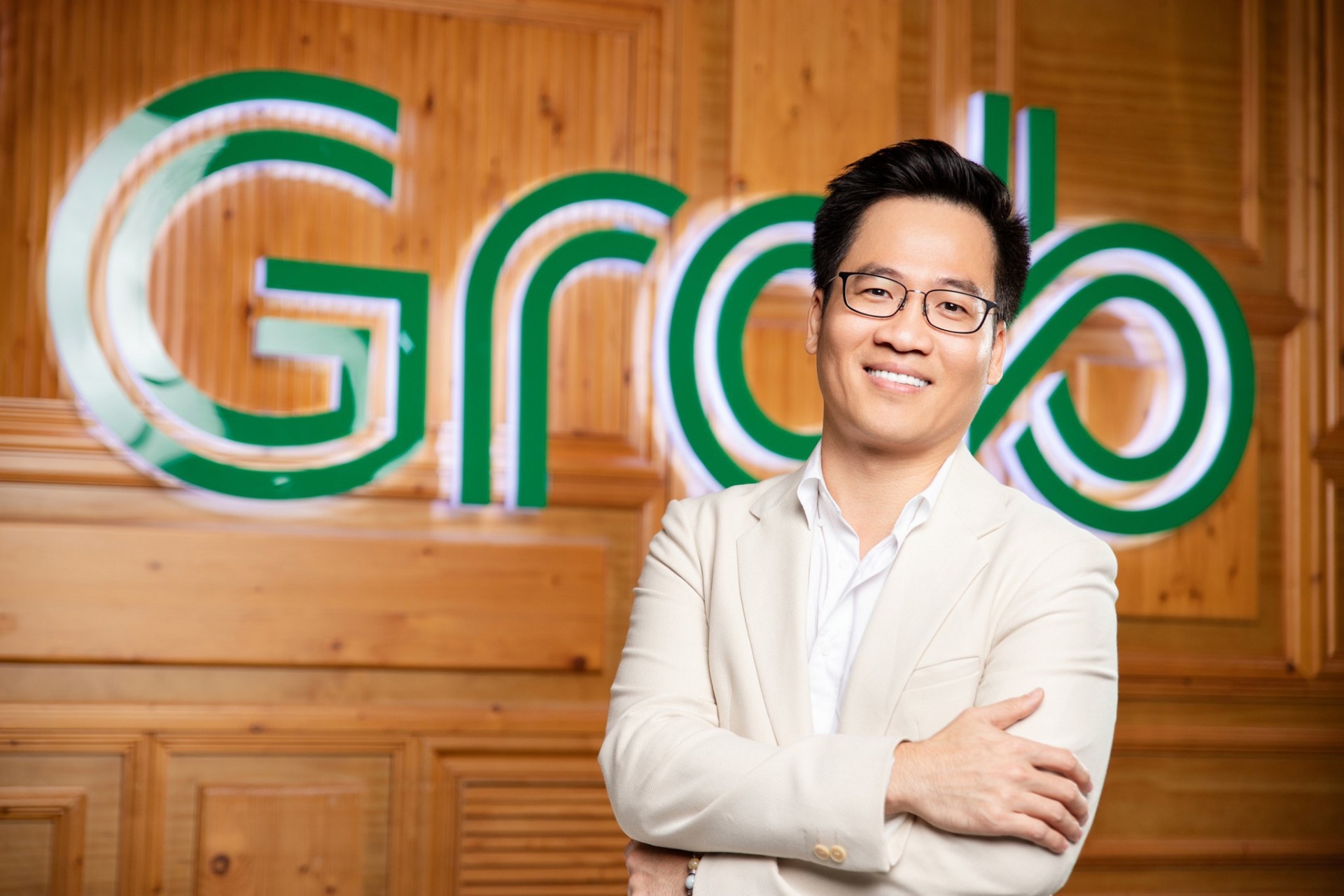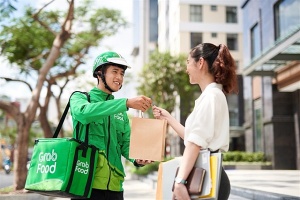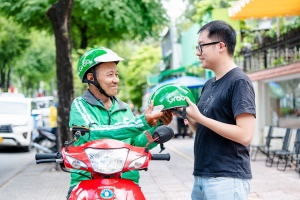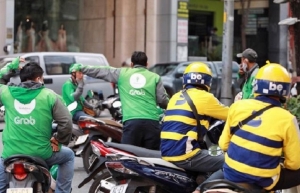Grab’s insights into Vietnam's food delivery market
 |
| Ma Tuan Trong, country commercial head at Grab Vietnam |
From your observations, how has the food delivery market evolved in the five years since you joined Grab Vietnam?
When I joined Grab, food delivery was still a novel concept in Vietnam. Back then, people primarily associated Grab with GrabBike and GrabCar. The industry was growingly embraced by users thanks to its convenience before the peak of the Covid-19 pandemic, Post-pandemic, food ordering has become a lasting consumer habit and lifestyle, with increasing order frequency and value, as shown by Grab’s research published in 2023.
Thanks to the efforts of the Grab team and our partners, Grab has evolved into a comprehensive multi-service application, with GrabFood now being an essential component. Between 2021 and 2023, the number of GrabFood’s merchants partners increased by 76 per cent, leading to higher customer satisfaction with the wide and diverse selection.
As the market evolves and Grab is no longer the sole player, how is GrabFood addressing the increasing competition?
According to Momentum Works, food delivery services in Vietnam experienced the highest industry GMV growth in the region in 2023, nearly 30 per cent. However, its market value is still lower proportionally compared to other Southeast Asian peers. This indicates significant untapped potential in the food delivery industry in Vietnam, and to stimulate demand, it’s necessary for all players to participate and create a robust market.
When competition intensifies, in a different lens, expanding the market is the primary goal, which requires multiple players. Competition becomes a catalyst for setting standards and driving improvements across the board. Every player is then required to recognise their strengths and try to maximise them.
In our five years in the market, GrabFood has identified its major advantages, including a wide and diverse network of merchant partners, a robust consumer base in transportation, deep market insights and advanced technology. Leveraging these strengths, we aim to continue growing and serving our customers.
Could you elaborate on GrabFood’s affordable pricing strategy to support its users?
Over the past year, Grab has implemented several plans (or launched several products and features) to make food delivery more affordable and convenient for users. The GrabUnlimited subscription package provides users with free or discounted delivery fees for GrabFood orders. The “Saver” option allows users to choose longer delivery times, enabling them to plan ahead and pay lower delivery fees.
Additionally, our group order feature caters to the common behaviour of Vietnamese users ordering food together, especially during office hours. This feature not only helps users save on delivery fees by consolidating orders but also encourages higher order values, unlocking additional incentives.
It simplifies the group ordering process by allowing users to share links or scan QR codes, customise their orders, and split the bill according to individual selections. Very soon, this feature will also enable cashless payments within the app for each member of the group order.
How has this strategy demonstrated its effectiveness over the past year?
Our affordability strategy has shown certain initial success, particularly amidst challenging economic conditions and tightening consumer spending. According to our data, Grab Unlimited users are ordering GrabFood 2.8 times more frequently than non-Grab Unlimited users as of 2023.
One out of every five completed GrabFood orders opts for the “Economy delivery” option as of Q4/2023. Most importantly, the popularity of group orders is increasing, with a 45 per cent rise in the number of orders utilising the Group Order feature in Q4/2023 compared to the previous quarter.
Given the ongoing economic challenges, Grab remains committed to enhancing user experiences moving forward through technological advancements and partnerships with reputable brands. Features such as the GrabUnlimited membership package and the Group Booking feature introduced last year will undergo continuous improvements to ensure smoother and more seamless app experiences for users, while also offering additional perks for users.
One of Grab’s recent focuses has been on expanding into smaller markets. Could you elaborate on this?
As I mentioned, there is enormous untapped potential for the food delivery market, and platforms like GrabFood must broaden their consumer base by targeting new consumer segments in major cities and exploring smaller markets.
To penetrate smaller cities, GrabFood has utilised its extensive network of driver partners across various provinces and cities nationwide. We have also focused on enhancing connections with local communities to raise awareness of the Grab brand and integrate GrabFood into their daily lives.
For instance, marketing efforts prioritise promoting and celebrating local cuisine. Additionally, Grab plans to collaborate with local authorities to install stone benches in public locations in cities like Danang, Nha Trang, and Vung Tau. These benches, equipped with Grab app QR codes, serve as meeting spots while promoting Grab’s services to locals and tourists alike.
Expanding into smaller cities presents challenges, including the varied living standards and spending capacities, necessitating an affordable pricing policy tailored to local needs.
In addition, limited familiarity among some local eateries and restaurants with digital business requires more efforts to provide guidance, training, and simplified processes for easy access. Nevertheless, GrabFood is committed to making its products, features, and incentives relevant and attractive to local populations while facilitating the adoption of digital business practices among local merchants.
 | Delivery apps help Vietnamese consumers discover new restaurants and shops 91 per cent of Vietnamese respondents have used the Grab app to discover new restaurants and shops that they have never tried before, according to Grab’s latest Food & Grocery Trends 2023 report. |
 | Grab Vietnam makes positive contribution in 2023 Grab Vietnam continues to reaffirm its long-term commitment to the Vietnamese market and to make positive contributions to the overall socioeconomic development of the country. |
 | Grab introduces Women Programme for driver-partners On March 6, Grab announced the launch of its Women Programme for driver-partners, an initiative that aims to support women in Vietnam to become drivers on its platform. |
 | Vietnam's ride-hailing market to reach $880,000 in 2024 Vietnam's ride-hailing market size is forecast to hit $880,000 in 2024 and $2.16 billion by 2029, growing at a compound annual growth rate (CAGR) of 19.5 per cent, according to Mordor Intelligence. |
What the stars mean:
★ Poor ★ ★ Promising ★★★ Good ★★★★ Very good ★★★★★ Exceptional
Related Contents
Latest News
More News
- CONINCO announces new chairman and CEO (December 10, 2025 | 11:00)
- How AWS is powering the next-gen data era (December 09, 2025 | 13:14)
- Outlook in M&A solid for Singapore (December 08, 2025 | 10:31)
- Vietnamese firms are resetting their strategy for global markets (December 05, 2025 | 17:04)
- LPBank Securities accelerates AI and data innovation with AWS (December 05, 2025 | 09:00)
- Improving traceability capacity with Zebra Technologies (November 26, 2025 | 10:08)
- Ho Chi Minh City engages 500 CEOs in dialogue on building global megacity (November 25, 2025 | 16:00)
- CEO shares insights on Phu My 3 IP’s journey to green industrial growth (November 17, 2025 | 11:53)
- NS BlueScope CEO highlights decade of sustainable steel efforts (November 15, 2025 | 10:00)
- SCG maintains strong cash flow and drives low-carbon growth in Q3 (November 07, 2025 | 09:53)

 Tag:
Tag:





















 Mobile Version
Mobile Version